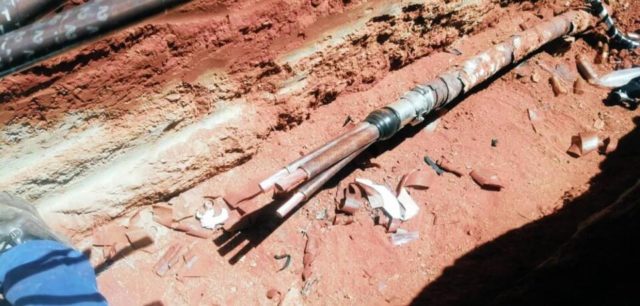In April 2022, the total estimated costs from copper theft across Transnet, Eskom, the Passenger Rail Agency of SA (Prasa) and municipalities amounted to R46.5 billion.
COPPER theft has caused economic damage estimated at more than R45 billion annually.
In April 2022, the total estimated costs from copper theft across Transnet, Eskom, the Passenger Rail Agency of SA (Prasa) and municipalities amounted to R46.5 billion.
This is according to the Economic Sabotage of Critical Infrastructure (ESCI) Forum, led by the group chief executives of Eskom, Prasa, Telkom and Transnet, who hosted a high-profile round table discussion to find solutions and discuss progress in tackling the challenge of theft and vandalism of economic infrastructure.
“The country’s critical infrastructure is a platform for economic activities and catalyst for growth that needs to be always protected by all.
“Telkom Group is characterised by high levels of crimes of cable theft/sabotage, battery theft and vandalism of infrastructure.
“These crimes hamper the provision of basic essential services to industries and communities,” said Telkom group chief executive officer, Serame Taukobong.
Presentations at the forum showed South Africa had around 25 000km of railway lines. Of that, Prasa owned 2 280km exclusively in Gauteng, eThekwini and Cape Town.
Transnet operates the remainder.
The length of cable stolen from Transnet’s lines rose six-fold from 2017 to 2021, from 120km to 724km. In 2021, more than 200km of railway tracks were stolen in November alone.
Transnet group chief executive, Portia Derby, said: “Transnet Freight Rail (TFR) has experienced an exponential increase in incidents over the past five years. This has resulted in increased tonnage and revenue losses, and increased repair costs.
“Over 1,500km of cable has been stolen (a 1,096% increase in the length of cable stolen) in the past five years, with a net financial impact of R4.1 billion.”
Meanwhile Eskom’s’ network comprises of 33,158km of transmission and 391,784km of distribution lines (total of 424,942km network made of copper, aluminium and steel). In 2020/21 the damage from stolen steel lattices was estimated at R100 million.
University of South Africa (Unisa) senior lecturer in the Department of Criminology and Security Science, Nomsa Cebekhulu, explained: “In 2020, Liebenberg’s research confirmed that bread and butter criminals steal copper for survival and in some cases to finance their drug habits.
“These subsistence criminals, as they are already copper thieves, may form part of a syndicate or are usually employed by the syndicate group to steal copper due to experience acquired, with an aim of exportation.”
Efforts to combat the crime on the part of police included the establishment of a Multi- Disciplinary Economic Infrastructure Task Team with 762 new dedicated officials.
Scrap metal dealers and recyclers of controlled metals (including copper) are also required to register under the Second-Hand Goods Act, 2009.
On August 5, the Department of Trade, Industry and Competition also published the draft policy proposals on measures to restrict and regulate trade in waste, scrap and semi-finished metals to limit damage to infrastructure and the economy.
Cape Times








